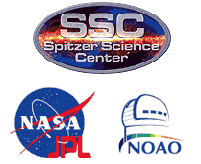Sponsored by NOIRLab, JPL, and the SSC
We would like to thank all the MGCT2 participants for making our workshop such a resounding success. Electronic versions of the talks and webcasts will be online shortly.
Preamble
In September 2004, the first “MGCT” workshop, held at STScI (online archive), was dedicated to exploring the census and origin of the most massive galaxies from high redshift to the present day. We explored whether or not there was a fundamental disconnect between observations and state of the art theory, discussed the nature and history of the emerging red sequence, and what connections could be drawn between galaxies with extremely high star formation rates and established massive galaxies.
Summary
Today, we find that a cogent picture of the origin and evolution of massive galaxies remains a challenge to the hierarchical paradigm of galaxy formation. Many strands of observational evidence, based on a panoply of data bolstered greatly by Spitzer, suggest that the most massive galaxies form most of their stellar mass in an early and dramatic short-lived, perhaps dust-enshrouded phase, and are largely quiescent thereafter. Increasingly sophisticated hierarchical models, even with qualified success in matching some key observations, still lack a mechanism (though not a label) that can regulate star formation. This “feedback” may be tied to AGN, supernovae, or other dynamical processes. Increasingly sophisticated and complete panchromatic imaging and spectroscopic surveys are investigating the roles of AGN, local environment and clustering in regulating galaxy growth in general, and the determination of present-day galaxy properties.
Goals
The goals of this workshop are to confront recent theoretical developments with the synthesis of these new observations, and to map the characteristics and the growth of the most massive galaxies over cosmic time. To that end, we will cover the following topics:
- The Emergence of the Red Sequence and Scaling Relations
- The Evolution of Mass in Massive Galaxies
- The Star Formation Histories of the Most Massive Galaxies
- The Role of AGN in the Most Massive Galaxies
- Ways Forward
SOC:
- E. Bell (MPIA)
- A. Dey (NOAO), co-chair
- L. Hernquist (CfA)
- L. Moustakas (JPL), co-chair
- A. Shapley (Princeton)
- L. Yan (SSC)
LOC:
- Jennifer Lotz
- Casey Papovich
- Jane Price
- Gregory Rudnick (chair)
- Christy Tremonti
